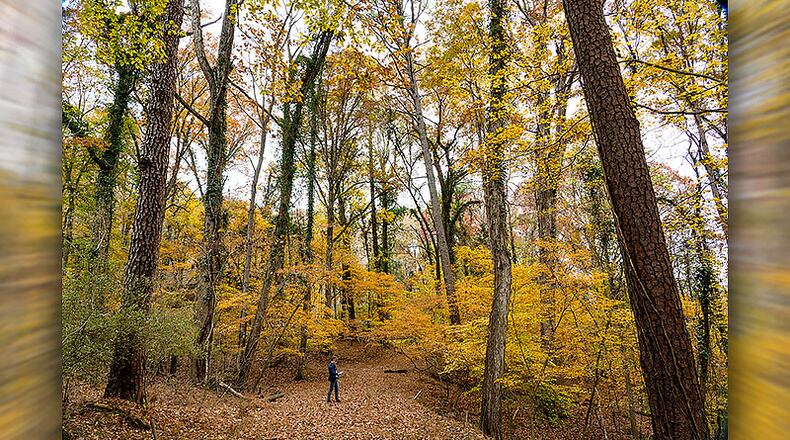In the midst of July’s record-breaking heat waves, the city of Atlanta released a study of our neighborhoods’ heat and flood vulnerability, which revealed that the highest temperatures are found in areas near downtown, midtown and along arterial roads. Common among these areas are acres and acres of unshaded parking lots, roads and asphalt roofs that trap heat.
The heat island effect, where paved surfaces and buildings absorb and slowly re-emit heat, can vary greatly within a city because trees and shade coverage provide significant cooling benefits where they’re present. Risks of heat-related illness and death are highest in low-income and poorly shaded neighborhoods where some residents may lack A/C.
Unsurprisingly, the study’s primary recommendation for reducing both extreme heat and flooding is to expand the urban forest. While investment in our urban forest is needed, those efforts must be paired with policies and actions that increase our housing density in order to ensure that our city is truly sustainable and healthy for all residents.
Credit: contributed
Credit: contributed
The unfortunate reality is most of Atlanta’s current tree canopy does not stem from a public commitment to sustainability. Rather, the majority of our city’s trees are owned and maintained privately, mainly on single-family lots. Trees are plentiful in certain neighborhoods, largely due to century-old exclusionary zoning laws that use green space requirements to exclude low-income, Black and immigrant families.
Single-family zoning, which bans apartments in favor of detached houses with large yards, raises the cost of housing and prices out lower-income residents even as it provides space for tree growth. Meanwhile, the few areas that allow dense development like apartments are often near busy, poorly shaded roads and surrounded by pavement.
Credit: contributed
Credit: contributed
While Atlanta’s single-family-only neighborhoods may look green, they contribute to sprawling suburban development in our region that increases carbon emissions, destroys habitats, worsens traffic congestion and raises housing costs. Whenever dense housing gets blocked by single-family zoning or other regulations, the demand for homes persists and would-be residents are pushed further and further from our city’s core to far-flung suburbs, where cheaper, sprawling housing is built at the cost of deforestation.
One of the most powerful ways we can reduce future carbon emissions is encouraging dense infill of housing and commercial development around public transit. Denser cities support more people in a smaller area, preserving surrounding areas as natural forests and local farms. Proximity to work and amenities reduces the need for fossil fuel consumption and supports sustainable transportation options, such as public transit, cycling and walking. Apartments and townhomes require less energy to heat and cool, take fewer resources to construct and can be more affordable than newly built single-family houses. Denser development also lowers the cost of public services such as roads, public transit and sewers by serving residents with less infrastructure.
Critics often pit trees against density, but this is a false choice. We can protect Atlanta’s existing forests and tree canopy while also cultivating dense development. Allowing missing-middle housing such as townhomes, duplexes and low-rise apartments in single-family neighborhoods would add density without destroying trees. Easing height restrictions would let apartments expand vertically instead of horizontally, preserving land for shaded green spaces. As the study itself recommends, features such as cool roofs can also bring down the temperature in places where reserving space for trees is too costly.
Higher density development makes further room for new street trees and stormwater infrastructure. Parking lots could become dense, energy efficient housing. Road lanes for cars could be transformed into tree-lined cycleways. If we’re willing to replace a fraction of Atlanta’s road space with trees we could have cool, shaded streets even in our city’s densest neighborhoods without sacrificing limited developable land.
As our city looks to update its zoning and tree ordinances, we must recognize that a “save every existing tree” approach ignores the realities of our environment, development finance and housing affordability. We need to plant more trees, but mandating green infrastructure without providing adequate flexibility or incentives can hinder the dense development that we desperately need to lower carbon emissions and house our growing population.
We need transformative action to meet the enormous threat that climate change poses to Atlanta’s residents and our planet. We cannot reduce our carbon emissions without challenging the fundamental systems that make our region unsustainable. It will take bold leadership and dedicated civic effort to end exclusionary zoning and stop our addiction to car-dependent sprawl, but it’s absolutely necessary if we want to be a city that is truly committed to providing a healthy environment for all residents.
Anton Gudiswitz is a chapter lead at Abundant Housing Atlanta, a nonprofit that advocates for more affordable and sustainable housing in our region. Jason Lathbury is the transportation committee chair for the Georgia Sierra Club.
About the Author
Keep Reading
The Latest
Featured





